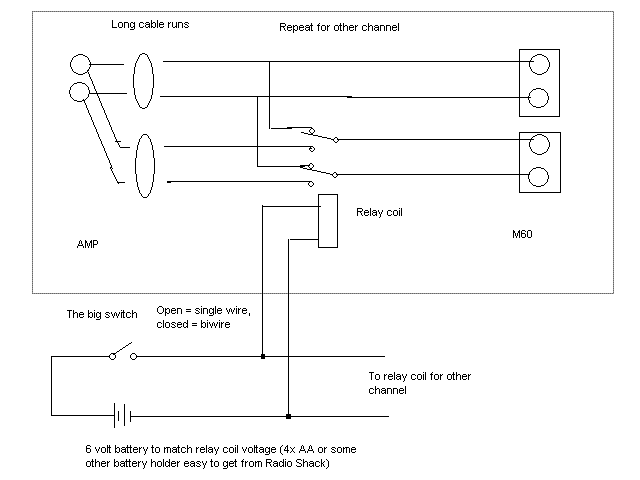It seems as if every bi-wiring thread ends up with some confusion between bi-wiring and bi-amping and drifts to a stop without reaching a conclusion.
There seem to be four different scenarios :
1. Some people argue that using multiple pairs connected in parallel at both ends give you the best tradeoff between resistance and capacitance for a given length of wire. I don't remember the details but the calculations seemed credible at the time. Having said that, this approach seems to be mostly used by people who have access to free cat-5 cable

2. Bi-wiring (two or more pairs of wires, connected in parallel at the amp but not at the speaker) seems the least likely to offer any real improvement other than possibly isolating the different impedence curves of the different drivers (ie the tweeter cable would not have to deal with current flowing into the 3-ohm impedence of the woofer when a 55 Hz signal is playing and therefore might eliminate some IR drop along the cable and produce a slightly purer sound) but IMO you can get the same result with a thicker single cable.
3. Putting a passive crossover at the amp rather than the speaker and bi-wiring from crossover to speakers. This seems like it *could* be beneficial but I've never seen it done.
4. Classic bi-amping -- active crossover before the amp, then different amp AND different speaker cables for each frequency range. This has all kinds of benefits, but some of them only apply when you're pushing the power limits of the amp (ie concert sound systems etc..) where overdriving the bass amp doesn't fry the tweeter and sometimes sounds pretty nice

You're talking about scenario 2, right ? One amp, with different speaker cables going to woofer and tweeter from the same amp connections ?
Seems to me that any time you are near the limits of wire size and distance there is the potential for getting slightly better sound by throwing copper at the problem. The question is not "do 2 14ga cables biwired sound better than 1 14ga cable" IMO but "do 2 14ga cables biwired sound better than 1 11ga cable" (or whatever).
Regardless of which scenario you want to test I have to think you have to switch at the speaker -- either a relay box at each speaker or a regular switch at each speaker would work, but you would need two assistants with switches.
A single DPDT relay / switch at each speaker would be enough. You would probably want to use a DC relay coil to be 100% sure that you weren't introducing any 60hz into the sound when the relays were actuated (although the chance of this is pretty slim).
Something like the following should work for comparing 1x 14g to 2x 14ga biwired :

Doing the more valid (IMO) test of 2 wires vs. one larger wire would require a 4PDT relay (or 2x DPDT) at each box. I'm not going to draw the diagram 'cause I have to go to work but let me know if you are interested.
Good luck, let us know how it works out. I have always wondered about this a bit but didn't have enough hope that the results would be worth the effort. I find some concepts real exciting but biwiring seems like a gimmick to me (until proven wrong, of course).
[EDIT] Let me know where you shop (hopefully something like Rat Shack with an easily accessible catalogue) and I can suggest part numbers for relay and switch. I do feel compelled to repeat that I don't think this is a good use of your time




